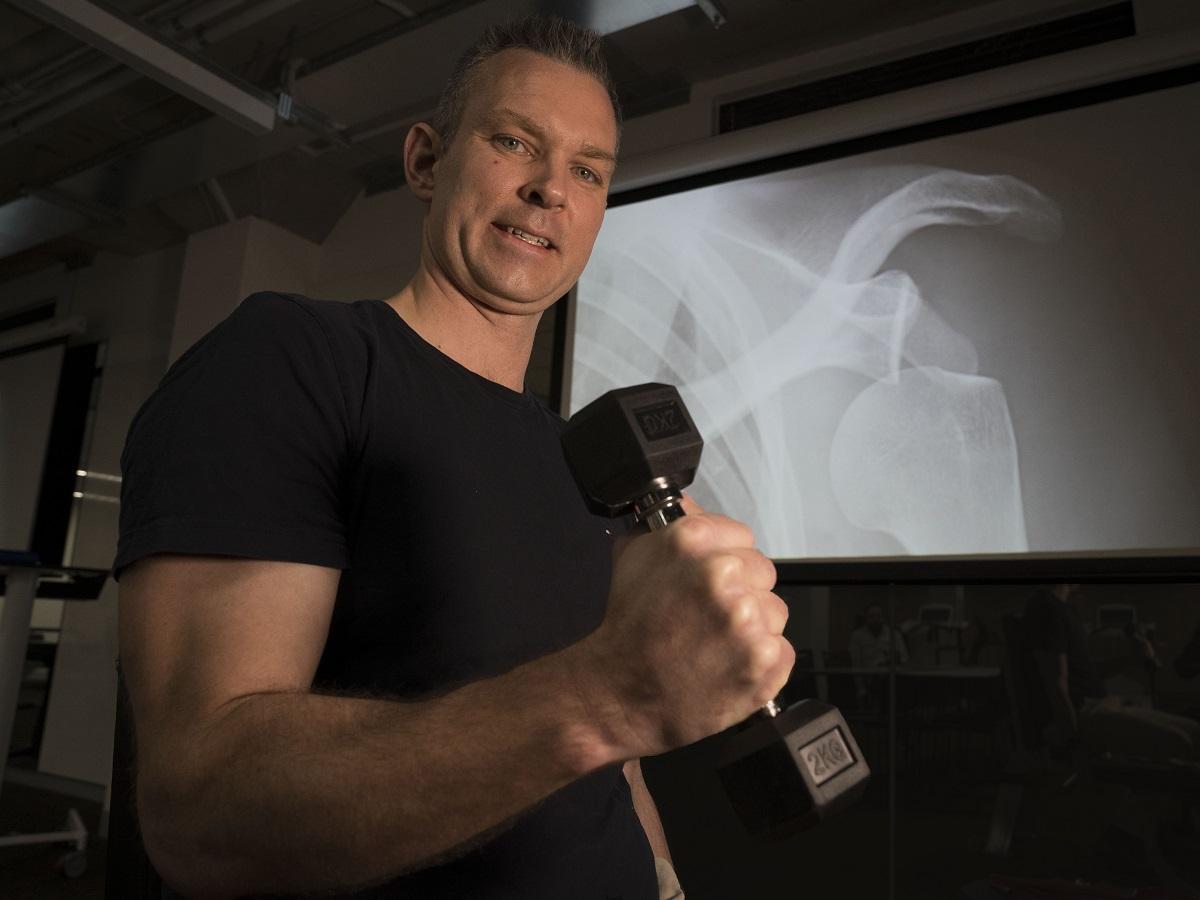
Dr Timothy Lathlean’s research shows patients with dislocated shoulders can benefit from a robust exercise program soon after surgery.
Starting a robust exercise program sooner after surgery could prevent patients with dislocated shoulders from sustaining a repeat injury and help them return to sport faster.
University of Adelaide researchers spent three years analysing evidence from 3,600 existing studies and found a tailored exercise program commencing three to six weeks after surgery was the best approach for preventing a secondary shoulder dislocation.
“Patients who dislocate their shoulder have a high risk of doing it again within six months, and can suffer from recurrent instability,” said the University of Adelaide’s Dr Timothy Lathlean, an Accredited Exercise Physiologist (AEP) and Post-Doctoral Research Fellow at the Adelaide Medical School and the South Australian Health and Medical Research Institute (SAHMRI).
“Our analysis found those who embarked on a robust exercise program after surgery were twice as likely to avoid a recurrent injury than those who used exercise alone to recover from their injury.”
The researchers found starting a multimodal program – a combination of exercises targeting strength, coordination, balance and muscular control – soon after surgery produced better results than standard care programs that rely on strength training only.
The review focused on patients who suffered from first time shoulder dislocations that occurred in a forward direction, due to a direct blow to the shoulder. This type of injury often happens while playing sport or in workplace accidents.
“Our analysis found those who embarked on a robust exercise program after surgery were twice as likely to avoid a recurrent injury than those who used exercise alone to recover from their injury.” Dr Timothy Lathlean, Adelaide Medical School, University of Adelaide.
Shoulder dislocations are particularly common among young males between the ages of 16 and 30 because they are more likely to play contact sports and have physically challenging occupations.
“Shoulder dislocation can be disabling and is often accompanied by weakness, stiffness, pain and inability to participate in day-to-day activities and sport,” said Dr Lathlean.
“People who have experienced this injury can have trouble returning to work or sports and there is an economic burden that comes with that. This could be lessened with more effective treatment and more timely targeted rehabilitation.”
This research was part of a collaborative project with a PhD researcher at the Texas Tech University Health Sciences Center and the University of Adelaide’s School of Allied Health.
The findings have been published in the and could help practitioners and researchers alike to get the best results from surgery and rehabilitation.
“The results show there is a real need for more sophisticated exercise programs in the rehabilitation phase to improve outcomes for patients and get them back to playing sport sooner,” said Dr Lathlean.
“Similar approaches are already common practice when recovering from other types of surgery for spine or knee-related injuries and the evidence from this study shows it would be beneficial for acute shoulder injury patients as well.”







